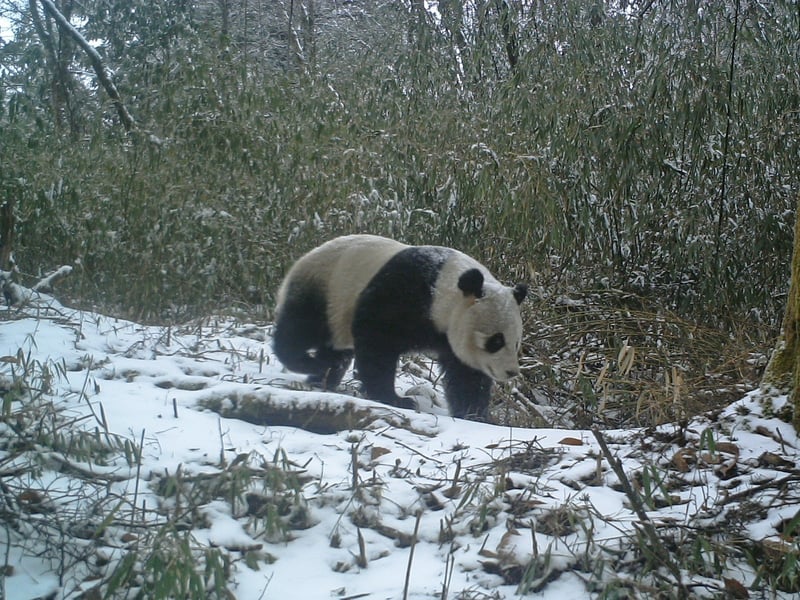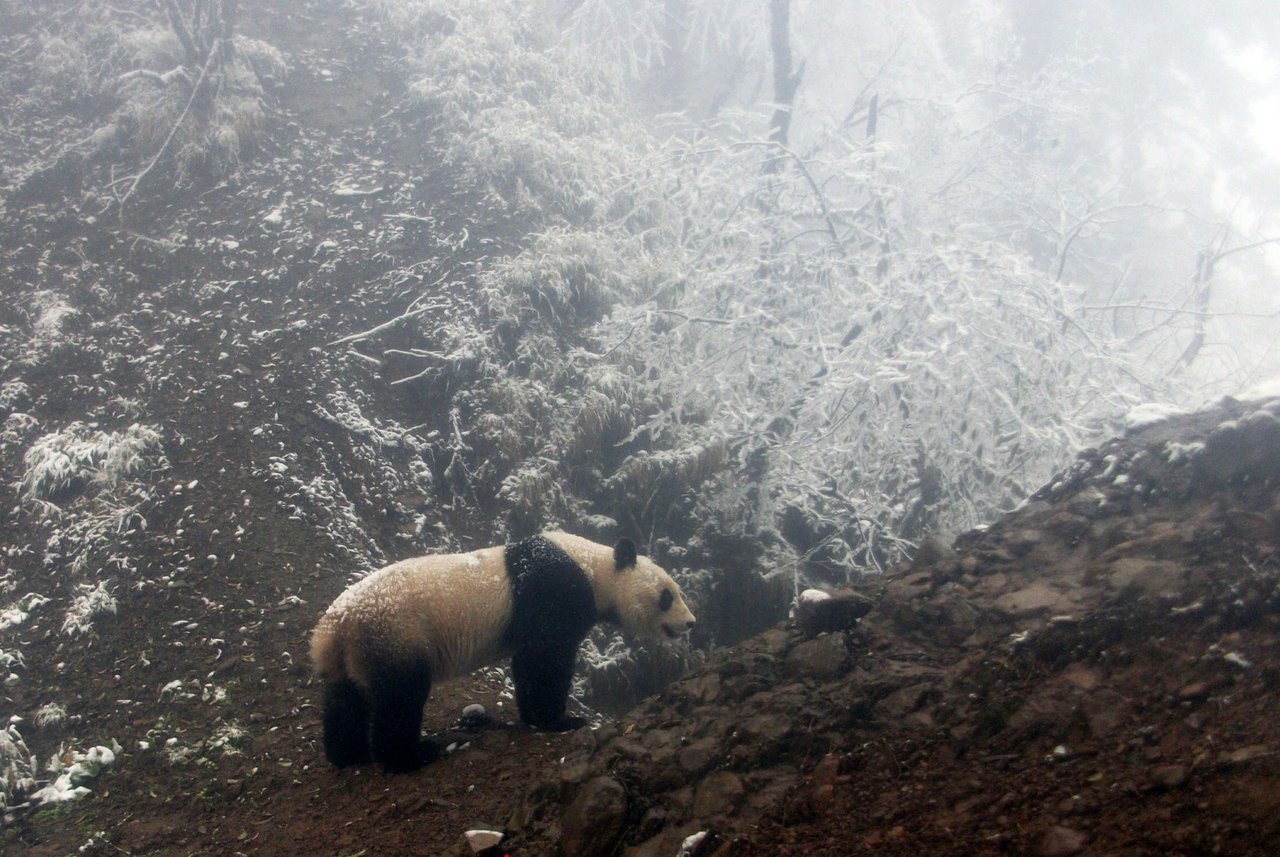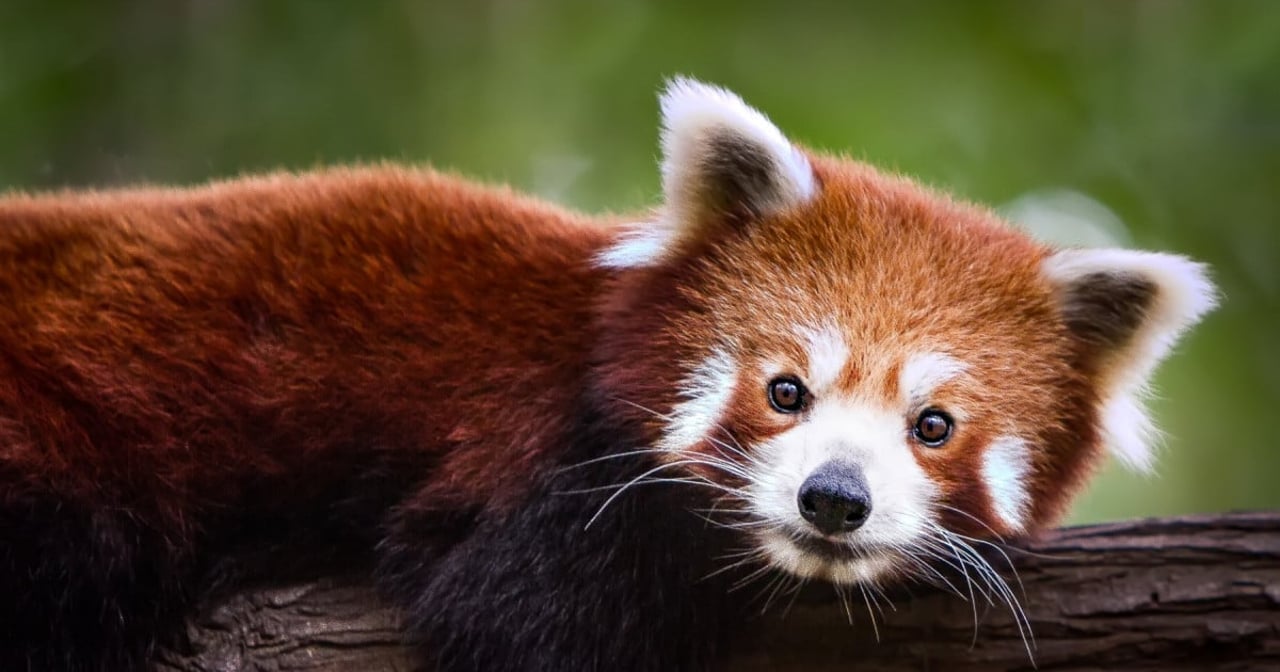
In honor of National Panda Day, we’re sharing these 7 facts about pandas to help you learn more about the habits and habitat of this beloved bear.
The giant panda is a creature beloved by many for its cuddly exterior and unique characteristics. National Panda Day is on March 16th — read and share these fun facts about pandas to celebrate this endearing animal and encourage others to protect wildlife everywhere.
7 Interesting Facts About Pandas for National Panda Day
1. Pandas are loners
Adult panda bears are known to be largely solitary, except during breeding seasons. Female panda bears in particular like their space, and are usually more territorial. Most pandas protect and contain their movement to a range of roughly 2 square miles.
2. Pandas eat all the time...
Pandas are unique among bears in being full herbivores in practice—it’s a commonly-known fact about pandas that their diet consists almost entirely of bamboo. The cellulose in bamboo does not produce a lot of energy for pandas, so they have to eat almost constantly!
3. and they eat with their thumbs!
Not really—pandas don’t actually have thumbs. But it is one of people’s favorite “facts” about pandas to claim that they do. Actually, the panda’s “thumb” is an enlarged wrist bone that allows them to handle bamboo and other food with impressive dexterity.
4. Their signature coat offers camouflage
Everyone knows the panda for their black and white coat—this distinctive coloring is one of the reasons people think they are so cute! But the pattern of the panda’s fur also allows them to blend in with both light and dark backgrounds (which is particularly useful in a bamboo forest).
5. There are two panda subspecies
The commonly recognized panda subspecies accounts for the majority of pandas existing in the world today, which are predominantly found in the Sichuan region of China (or sadly, in captivity). However, there is also a rarer subspecies of panda that only lives in the Qinling Mountains of the Shaanxi region of China—these special pandas are a little smaller than the common giant panda, and their fur is brown and white, instead of black and white.
Neither of these panda subspecies is the same as the red panda (also called the “lesser panda”) which is a more distantly related cousin of the giant panda. The red panda is itself endangered—it’s found in the Himalayan Mountains, across Nepal and China.
6. Baby pandas are some of the smallest infant mammals
Due to the panda’s short gestation period, baby pandas are born weighing just 4 ounces. Baby pandas are actually the smallest offspring born to any placental mammal (relative to the size of the mother panda). Baby pandas are blind and nearly helpless at birth, and require intensive care from their mothers during the first few months of their lives.
7. Pandas need our help
While these facts about pandas are undoubtedly fun to learn, they don’t change the sad reality that historically, giant pandas have been severely endangered. Successful conservation efforts in China to protect wild pandas and their bamboo forests helped the panda’s classification improve slightly from “endangered” to “vulnerable” in 2016. While zoos and wildlife organizations around the world have coordinated captive breeding programs to ensure the panda’s continued existence, captive breeding is not as good as protecting pandas in the wild.
The panda’s vulnerable status is the result of hundreds of years of illegal poaching. Wildlife trafficking and trade continue to harm wild animals today and present risks to our environment and our health. Stand with World Animal Protection and help us end the global wildlife trade for good so that the world can continue to enjoy the beauty of animals like pandas.

